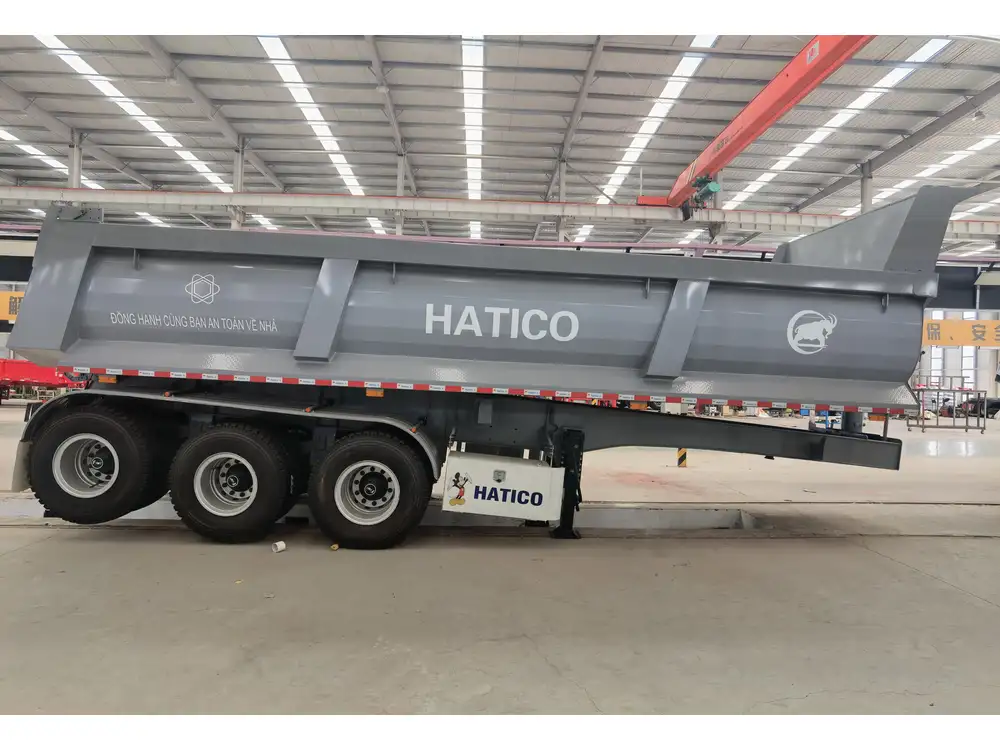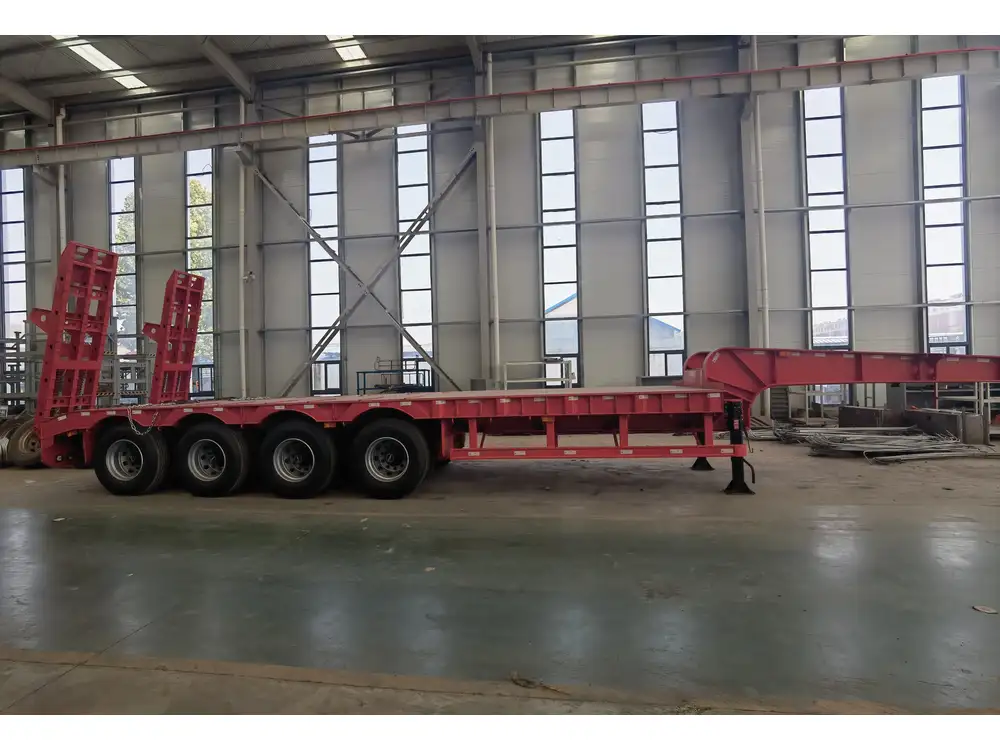Creating your own flatbed trailer can be an exciting project that provides both utility and customization tailored to your specific needs. However, navigating the legal requirements to get the proper registration, including obtaining license plates, can often feel overwhelming. This guide breaks down the steps you need to take, ensuring a smooth process to get your homemade flatbed trailer road-ready.
Understanding the Basics: What You Need to Know about Trailer Registration
Trailer registration laws vary significantly from one state to another, and understanding these variations is essential for a seamless process. Before applying for plates, familiarize yourself with the following fundamental components:
| Item | Description |
|---|---|
| Trailer Classification | Determine if your trailer is classified as a utility, flatbed, or another type. Different classifications may have unique requirements. |
| State Regulations | Research local laws pertaining to registration, which can include paperwork, fees, and inspections. |
| Weight Limit | Many states have different plates for light-duty versus heavy-duty trailers, based on their weight limits. |
| VIN Requirements | Homemade trailers typically require a specific identification number, often applied by the manufacturer, which must be included in any registration paperwork. |
Step-by-Step Process for Obtaining Plates for Your Homemade Flatbed Trailer
Navigating the path to licensing your homemade flatbed trailer entails several methodical steps. This structured approach will help simplify an otherwise convoluted process.

1. Design and Build Your Flatbed Trailer
Before diving into the registration process, ensure that your trailer adheres to safety regulations and is completed to a satisfactory level. Consider the following aspects during construction:
- Frame and Structure: Utilize high-quality materials and ensure durability.
- Safety Features: Incorporate safety chains, reflectors, and lighting systems as required by law.
- Weight Distribution: Pay attention to load capacities, as this will influence licensing considerations.
2. Gather Required Documentation
Once your trailer is complete, compile all necessary documents. Below is a checklist of the primary documentation you will need to prepare:
| Document | Purpose |
|---|---|
| Proof of Ownership | Receipts or bills of sale for materials used. |
| Bill of Materials | A comprehensive list detailing all materials used in your trailer’s construction. |
| Photos of the Trailer | Documenting the trailer’s construction stages. |
| Homemade Trailer Affidavit | An affidavit, which can often be obtained from your local DMV, attesting that the trailer has been built by yourself. |
3. Apply for a Vehicle Identification Number (VIN)
For homemade trailers, securing a VIN is a pivotal step. Depending on your state’s regulations, you may need to:
- Request a VIN: Contact your local Department of Motor Vehicles (DMV). Ensure this process aligns with your state’s guidelines for homemade trailers.
- Affix the VIN: After receiving your VIN, affix it to your trailer in a visible location—typically on the frame.

4. Complete the Registration Application
Once you’ve obtained your VIN and gathered your documents, you’re ready to fill out your registration application. The forms may be available online or at your local DMV, and consider the following while applying:
- Personal Information: Input your details accurately, including name, address, and contact information.
- Trailer Details: Provide specifics about your flatbed trailer, including make, model, weight, dimensions, and VIN.
- Affidavit and Bill of Materials: Attach all necessary documents that support your application.
5. Submit Your Application
Immediately after completing the application, proceed to submit it along with the required fees. Keep an eye on the following:
- Fees: Registering a homemade trailer typically involves an initial registration fee, as well as recurring renewals. Research your state’s fee structure ahead of time.
- Submission Method: Check whether you can submit your documents online or if you need to deliver them in person. Some states may also offer mail-in options.
6. Pass Inspections (if Required)
Certain states mandate that homemade trailers pass an inspection before registration. Make sure to:
- Schedule an Inspection: If requested, schedule a time with local DMV officials or an authorized inspection site.
- Preparation: Ensure your trailer is compliant with all safety standards and regulations prior to inspection.

7. Receive Your License Plates
After passing any necessary inspections and receiving your registration approval, you will finally obtain your plates. Keep in mind:
- Display Requirements: Thoroughly review local laws to understand where and how to display your license plate on the trailer.
- Legal Compliance: Ensure you keep a copy of all documentation accessible with your trailer to avoid legal complications.
Troubleshooting Common Issues: What to Do If Problems Arise
While most people can navigate this registration process with few hiccups, challenges can arise. Here’s how to troubleshoot common problems efficiently:
Missing Documentation
If you find yourself lacking crucial documents:
- Contact Suppliers: Reach out to suppliers of your trailer materials for receipts.
- Request Copies: If bills of sale are unavailable, request copies from your local DMV or relevant authorities.

VIN Acquisition Delays
In the event of delays in obtaining a VIN:
- Follow Up: Consistently check in with your local DMV regarding your request.
- Understand Alternatives: Look into alternative means of identifying your trailer if VIN issues persist.
Inspection Failures
Should your trailer fail the inspection:
- Request Feedback: Speak with the inspector to understand the reasons for failure.
- Make Necessary Changes: Implement their recommendations promptly to bring your trailer up to code.
Comparisons: Homemade Trailers versus Commercial Trailers
Understanding the differences between homemade and commercially manufactured trailers can provide further clarity on your choices:
| Aspect | Homemade Trailers | Commercial Trailers |
|---|---|---|
| Cost | Generally lower, as you source materials yourself. | Higher upfront costs due to manufacturing. |
| Customization Options | Unlimited customization; tailor-made for specific needs. | Limited to manufacturer offerings and designs. |
| Legal Complexity | Additional paperwork and VIN acquisition required. | Simplified registration processes for pre-built products. |
| Quality Assurance | Dependent on personal skill and material selection. | Comes with warranties, quality checks, and standards. |

Conclusion: Your Path to a Road-Ready Homemade Flatbed Trailer
Obtaining license plates for your homemade flatbed trailer need not be a daunting task. With careful planning, attention to detail, and adherence to your local regulations, you can effortlessly navigate the process. Familiarize yourself with state-specific requirements and remain diligent throughout the various steps—knowing that proper preparation can lead to a successful registration outcome.
Whether you’re using your trailer for hauling equipment, transporting materials, or as a base for further projects, ensuring it is legally compliant gives you peace of mind on the road. Enjoy your journey as you create and customize your flatbed trailer, empowered by the knowledge that you can overcome regulatory challenges with ease. Tailor your project to perfection, ensuring it meets your needs while adhering to local laws—transforming your vision into reality one step at a time.



